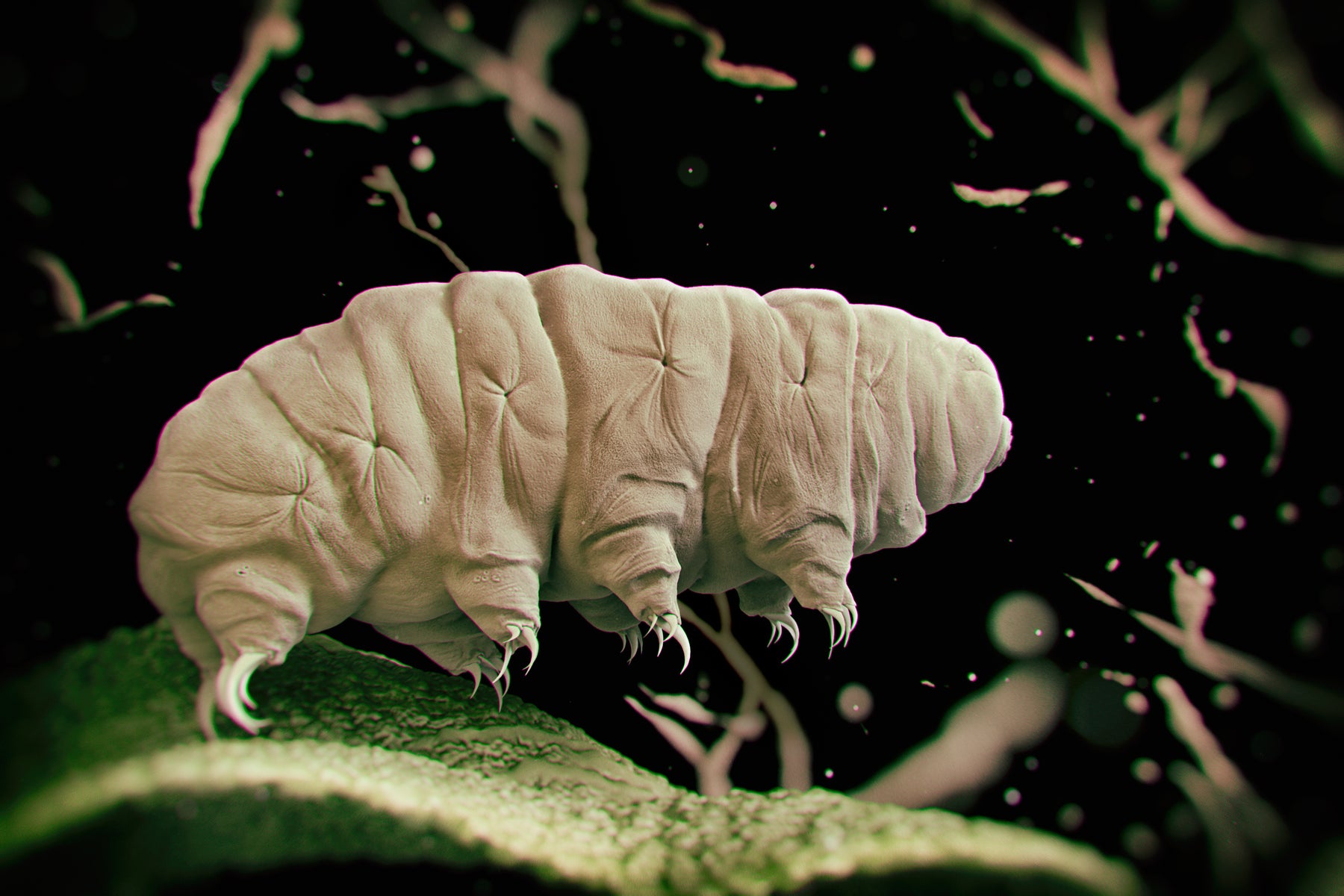
Tardigrades, also known as water bears or moss piglets, are tiny, resilient creatures that can survive extreme conditions. They are found in various environments, including moss, lichen, leaf litter, and even the deep sea. If you're a teacher or parent and are interested in finding and viewing tardigrades with curious learners, here's a step-by-step guide to help you get started:
Step 1: Choose Your Collection Site
- Tardigrades are commonly found in moist environments. Look for a suitable location where they might be present, such as a patch of moss, lichen, or leaf litter.
Step 2: Collect Your Sample
-
Using tweezers, gently collect a small sample of the chosen material (moss, lichen, etc.) and place it in your collection container.

- Add a few drops of water to the container to keep the sample moist. Tardigrades require a film of water to move and survive.
Step 4: Observe Under a Microscope
- Place a small portion of your sample on a microscope slide and add a cover slip. Ensure there's enough moisture to keep the tardigrades active.
- Carefully place the slide under your microscope, securing it in place.
- Start with low magnification (e.g., 40x) to locate the tardigrades. As you find them, increase the magnification for a closer look.
- Focus the microscope carefully to get a clear view of the tardigrades. Adjust both coarse and fine focus as needed.

Step 5: Identifying Tardigrades
- Tardigrades are barrel-shaped, segmented animals with four pairs of legs, each ending in claws or suction cups.
- They are typically around 0.1 to 1.5 millimeters in length.
- Observe their movements, as tardigrades can be quite active and exhibit a slow, graceful walk.
Step 6: Record Your Observations
- Take notes, photographs, or videos of the tardigrades you find. Document their size, shape, and any interesting behaviors you observe.
- Be gentle when handling tardigrades and avoid drying out the sample.
- Return the tardigrades to their original environment after your observations to ensure their survival.
Remember that tardigrades are incredibly resilient, but it's essential to handle them with care and respect their natural habitat. Additionally, different species of tardigrades may have varying appearances and behaviors, so documenting your findings is valuable for scientific purposes.

Amazing Facts About Tardigrades
-
Incredibly Resilient: Tardigrades are among the most resilient organisms on Earth. They can survive extreme conditions that would be lethal to most other life forms, such as extreme temperatures, radiation, and even the vacuum of space.
-
Survival in Space: Tardigrades have been sent into space on various missions and exposed to the harsh conditions of outer space, including cosmic radiation and the vacuum. They not only survived but were able to reproduce after returning to Earth.
-
Cryptobiosis: Tardigrades have a unique ability called cryptobiosis, where they can effectively shut down their metabolism and lose up to 97% of their body's water content. In this state, they can survive in extreme environments for years or even decades.
-
Extreme Temperature Tolerance: Tardigrades can withstand temperatures ranging from close to absolute zero (-459.67°F or -273.15°C) to over 300°F (150°C).
-
Pressure Tolerance: They can survive extreme pressures, including the pressure at the bottom of the ocean. Some tardigrade species have been found in the Mariana Trench, the deepest part of the world's oceans.
-
Radiation Resistance: Tardigrades can endure high levels of ionizing radiation, which is typically lethal to most organisms. This ability makes them of interest to scientists studying radiation resistance.
-
Longevity: Tardigrades have relatively long lifespans for microorganisms, with some species living for several years. This is especially impressive considering their small size.
-
Wide Distribution: Tardigrades are found all over the world, from the highest mountains to the deepest seas, and even in Antarctica. They inhabit various terrestrial and aquatic ecosystems.
-
Tiny Size: Tardigrades are incredibly small, typically ranging from 0.1 to 1.5 millimeters in length. Despite their size, they exhibit complex behaviors and structures under the microscope.
-
Unique Anatomy: They have a distinctive barrel-shaped body with four pairs of stubby legs, each with claws or suction cups. Their mouthparts are equipped with stylets for piercing and sucking fluids from plant cells or other microorganisms.
-
Diverse Species: Over 1,300 species of tardigrades have been described so far, and many more likely exist. Each species may have unique adaptations and survival strategies.
-
Ancient Origins: Tardigrades have an ancient lineage, with fossils dating back to the Cambrian period, over 500 million years ago.
-
Research Interest: Tardigrades are subjects of intense scientific study due to their remarkable resilience and potential applications in biotechnology and astrobiology.
-
Extremophiles: They are considered extremophiles, organisms that thrive in extreme environments, and studying them provides insights into the limits of life on Earth and the potential for life elsewhere in the universe.
-
Contributions to Medicine: Tardigrades' stress resistance mechanisms have inspired research into improving the preservation of human tissues and organs for transplantation.
These incredible abilities and characteristics make tardigrades one of the most captivating and mysterious life forms on our planet, continually pushing the boundaries of our understanding of life's resilience and adaptability.
Enjoy your journey into the fascinating world of these microscopic creatures!




